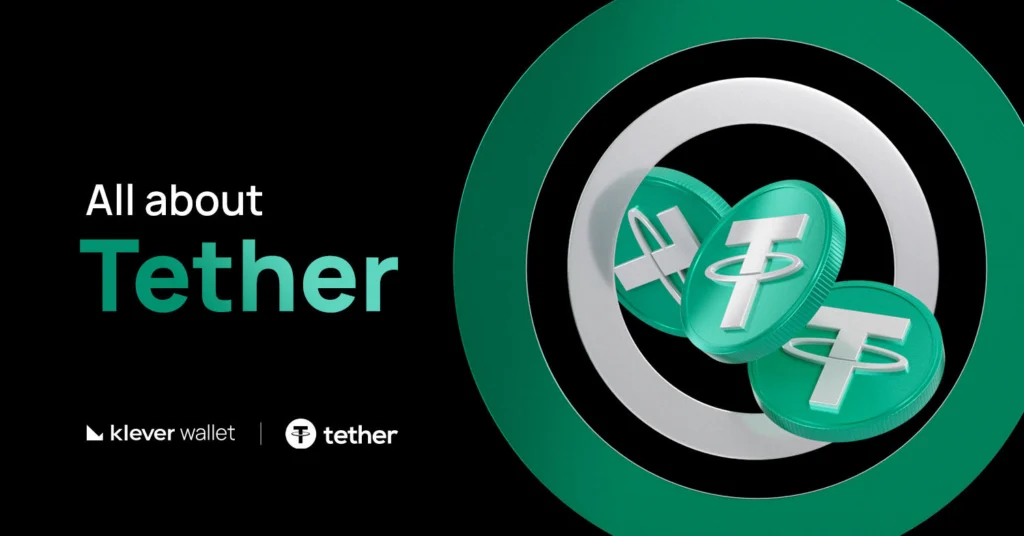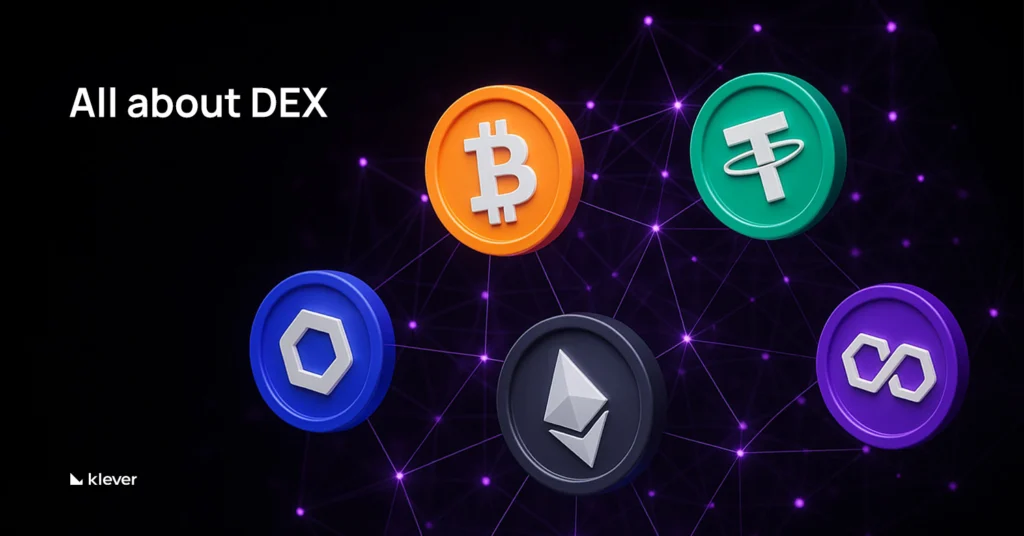
As the issuer of the world’s most widely used stablecoins, Tether plays a crucial role in connecting traditional finance with blockchain technology.
Curious about how Tether works and why it’s so important in today’s financial landscape? Let’s take a closer look at what makes Tether a cornerstone of the crypto economy.
What Is Tether?
Tether Products
USDT – Pegged to the U.S. Dollar
USDT (Tether USD) is the first and most widely adopted stablecoin issued by Tether. Each token is designed to maintain a 1:1 peg with the U.S. dollar and is backed by a mix of cash, U.S. Treasury bills, gold, Bitcoin, and other liquid assets.
Key points:
-
Most traded crypto asset globally by daily volume;
-
Available on multiple blockchains: Ethereum, Tron, Solana, Avalanche, Polygon, and more;
-
Used for trading, DeFi, remittances, and as a dollar substitute in inflationary economies;
-
Core trading pair on most centralized and decentralized exchanges.
EURT – Pegged to the Euro
EURT is Tether’s euro-pegged stablecoin, designed to mirror the value of 1 euro per token. It offers European users and businesses a blockchain-native alternative to transacting in euros without relying on banks.
Use cases:
-
On-chain payments and settlements in euro zones;
-
FX trading and hedging between EURT and USDT;
-
Useful for European DeFi protocols or merchants accepting crypto in euros.
Note: While less adopted than USDT, EURT serves a niche role in euro-denominated digital finance.
XAUT – Pegged to the Price of Physical Gold
XAUT (Tether Gold) is a digital asset backed by physical gold stored in Swiss vaults. Each XAUT represents one troy ounce of gold, offering the benefits of gold ownership with the speed and flexibility of blockchain.
Why it matters:
-
Appeals to investors seeking exposure to gold without needing physical custody;
-
Combines the stability of gold with crypto liquidity;
-
Useful in inflation hedging and as a store of value in volatile markets.
Available on: Ethereum (ERC-20) and Tron (TRC-20).
CNHT – Pegged to the Offshore Chinese Yuan
CNHT is a stablecoin pegged to the offshore Chinese renminbi (CNY). It provides a blockchain-based tool for yuan-denominated transactions outside mainland China’s banking system.
Key features:
-
Tracks the value of the CNH (not the onshore CNY);
-
Used in Asia-focused markets for cross-border payments and FX exposure;
-
Offers an alternative for yuan-pegged stablecoin interactions in decentralized systems.
Adoption: CNHT remains relatively niche but supports financial infrastructure in Asia-Pacific regions and China-facing DeFi applications.
All of these are issued by Tether Holdings Ltd., which is registered in the British Virgin Islands, with operations also in Hong Kong and other jurisdictions.
Who Created Tether?
Tether was originally created by a group of entrepreneurs and developers with backgrounds in crypto, finance, and entertainment. The key figures behind its creation are:
-
Brock Pierce – Crypto investor and co-founder of EOS and Blockchain Capital
-
Craig Sellars – Omni Layer developer, provided Tether’s technical foundation
-
Reeve Collins – Former Realcoin CEO and marketing lead
Why Tether was created?
Tether was created to bring stability to the crypto market. Its founders aimed to solve a major problem in early crypto adoption: the extreme volatility of cryptocurrencies like Bitcoin.
Purpose Behind Tether’s Creation
- Bridge Fiat and Crypto:
- In 2014, converting between fiat (like USD) and crypto was expensive, slow, and heavily regulated.
- Tether offered a digitized version of fiat money on the blockchain — a token always worth ~$1, but easy to send, trade, and store like any other crypto.
- Enable Fast, Stable Trading:
- Traders needed a way to hedge against volatility without cashing out to banks.
- Tether allowed them to exit risky trades instantly while staying on-chain — no need to wait for wire transfers.
- Boost Liquidity on Exchanges:
- Early crypto exchanges lacked reliable access to fiat banking.
- By using Tether, exchanges could offer “dollar pairs” without actually holding dollars — reducing legal and operational risk.
- Increase Transparency (initially):
- Tether claimed each token was fully backed 1:1 by fiat reserves, making it more transparent and trustworthy than informal IOUs between exchanges or OTC desks.
- Support Cross-Border Payments:
- Tether also opened the door for global money transfers in a stable currency, especially in regions with weak local currencies or limited banking access.
How Tether Works as a Company?
- Tether accepts fiat deposits from institutional clients.
- In exchange, it mints an equivalent amount of tokens.
- These tokens can be redeemed for fiat or transferred across supported blockchains.
- Tether earns revenue through:
- Interest on its reserve assets (e.g., U.S. Treasury Bills)
- Institutional fees
- Strategic investments
Tether Real Use Cases
Here are the real-world use cases of Tether (as a company and its stablecoins, especially USDT) — focusing on what users, businesses, and institutions actually do with it in practice:
1. Crypto Trading Pair & Hedge
- Tether is the most used quote currency on centralized exchanges.
- Traders use it to:
- Buy/sell crypto assets without converting back to fiat
- Park value in a stable form during high volatility
- Avoid delays or costs of bank transfers
Example: A trader exits a volatile Bitcoin position into USDT to lock in gains instantly.
2. Arbitrage Between Exchanges
- Used for fast transfers between platforms (CEX or DEX).
- Enables users to exploit price differences across markets with minimal slippage or settlement delay.
3. Cross-Border Payments & Remittances
- In countries with unstable local currencies or limited banking, Tether is used as a digital dollar.
- Faster, cheaper, and more accessible than traditional remittance systems.
Example: A freelancer in Argentina receives stable, dollar-pegged payments in Tether instead of volatile crypto or devalued pesos.
4. DeFi Collateral & Liquidity
- Used in lending, borrowing, and yield farming across DeFi protocols.
- Commonly paired in liquidity pools (e.g., USDT/ETH) to reduce impermanent loss.
Example: A DeFi user supplies USDT on Aave or Curve to earn interest or swap tokens efficiently.
5. Treasury & On-Chain Cash Management
- Companies, DAOs, and investment funds hold USDT as a low-volatility asset on-chain.
- Used to pay salaries, manage reserves, or prepare for strategic deployment.
Example: A DAO keeps part of its treasury in USDT to fund developers without market exposure.
6. NFT & GameFi Transactions
- Tether is integrated in marketplaces and blockchain games as a stable currency for in-game assets and royalties.
Example: Artists or gamers prefer to receive income in USDT instead of more volatile tokens.
7. Stable Store of Value in Inflationary Economies
- In countries like Venezuela, Lebanon, Turkey, and Nigeria, USDT is often used as a proxy for the dollar.
- Adopted by merchants, individuals, and informal markets.
Example: Local businesses accept Tether payments via mobile wallets to avoid currency devaluation.
Tether Reserves
Tether publishes attestation reports by the accounting firm BDO, showing the composition of its reserves. As of 2025, over 66% of its reserves are held in short-term U.S. Treasury Bills, with the rest in cash, reverse repos, and other highly liquid, low-risk assets.
Tether’s Market Role
- Dominant issuer in the stablecoin market, with over $160 billion in total supply across all products.
- Used globally for crypto trading, cross-border settlements, and DeFi activity.
- One of the largest holders of U.S. government debt among private companies.
Regulation, Compliance & Transparency
Tether has faced intense regulatory scrutiny over the years—especially around the transparency of its reserves and the adequacy of its disclosures. However, the company has taken concrete steps to improve its compliance posture and public accountability.
Past Controversies
In 2021, Tether reached a settlement with the New York Attorney General (NYAG) after an investigation revealed that the company had, at times, misrepresented the backing of its stablecoins. As part of the agreement:
- Tether paid an $18.5 million fine.
- It agreed to cease operations in New York.
- It committed to publishing quarterly reports detailing its reserve composition.
This case was a turning point for the company, prompting it to implement stronger transparency measures and risk controls.
Current Measures to Enhance Transparency
1. Monthly Reserve Attestations by BDO
Tether now publishes regular independent attestations from BDO, a top global accounting firm. These reports show the total value and breakdown of Tether’s reserve assets, including U.S. Treasuries, Bitcoin, gold, secured loans, and cash equivalents.
2. Commitment to Full Audit (Expected by Late 2025)
Tether has publicly stated its goal to undergo a full independent audit from a Big Four accounting firm. While attestations verify the existence of reserves at a given time, a full audit would provide deeper assurance of accounting practices, risk management, and compliance.
3. Global Cooperation with Law Enforcement and Regulators
Tether actively works with regulatory bodies and law enforcement agencies around the world. The company responds to lawful requests and complies with anti-money laundering (AML) frameworks and Travel Rule requirements.
4. $835 Million+ in Frozen Illicit Assets
As part of its compliance operations, Tether has assisted in freezing over $835 million worth of USDT linked to scams, hacks, and criminal investigations. This includes coordinated efforts with global authorities to stop the misuse of stablecoins in illicit finance.
Tether’s Evolving Regulatory Role
Despite its past controversies, Tether is increasingly positioning itself as a compliant, systemically important player in the digital asset space. It aligns with recommendations from the Financial Stability Board (FSB) and other international regulatory bodies, particularly regarding disclosures, risk management, and fiat-backed asset transparency.
Tether’s Strategic Expansion in 2025
In 2025, Tether expanded far beyond its original role as a stablecoin issuer. The company is reinvesting billions of dollars in sectors that align with its long-term vision of decentralization, infrastructure resilience, and cutting-edge technology.
Here’s how Tether is diversifying its business and increasing its influence:
Bitcoin Lightning Network Integration
Tether launched USDT on the Bitcoin Lightning Network, enabling ultra-fast and low-cost transactions.
This move combines the stability of USDT with the speed and scalability of Lightning, making microtransactions (like payments under $1) viable for businesses, merchants, and mobile users.
This integration also strengthens Bitcoin’s role in payments—bridging Bitcoin’s security with Tether’s liquidity.
Expansion into Artificial Intelligence (Tether Evo)
Tether is funding Tether Evo, an AI research and development division focused on building advanced infrastructure for decentralized systems.
Although specific projects are still under wraps, the goal is to create AI tools and platforms that improve automation, security, and performance across blockchain applications and digital identity systems.
This positions Tether to compete in the rapidly evolving intersection of AI and Web3.
Eco-Friendly Bitcoin Mining in Uruguay
Tether has invested in building sustainable Bitcoin mining facilities powered by 100% renewable energy in Uruguay.
By leveraging the country’s clean hydro and wind energy, Tether is addressing two key challenges in crypto mining:
- Reducing the environmental footprint
- Increasing self-reliance in blockchain infrastructure
These mining operations are part of a broader strategy to support the security and decentralization of the Bitcoin network.
Investment in Brain-Computer Interfaces (Blackrock Neurotech)
Tether acquired a stake in BlackRock Neurotech, a U.S.-based company developing brain-computer interface (BCI) technology.
This futuristic move aligns with Tether’s ambition to be a part of next-generation human-machine interaction—potentially useful for authentication, biometric wallets, or new forms of communication in decentralized networks.
It’s also a bold signal that Tether aims to influence neurotechnology and medical innovation beyond blockchain.
Sports Marketing & Brand Presence: Juventus F.C.
In 2025, Tether became a strategic investor in Juventus Football Club, one of Europe’s most iconic teams.
This investment is not only financial—it’s part of a brand strategy to increase Tether’s visibility among mainstream audiences through sports sponsorships, fan tokenization, and potential ticketing innovations powered by blockchain.
Tether’s Market Impact: 2025 Overview
- Market Leader: Holds 60–70% of global stablecoin market share, outperforming USDC and DAI.
- Massive Circulation: Over $157 billion in USDT issued, making it the most traded crypto asset globally.
- Global Reach: Used by 400+ million people worldwide, especially in regions with inflation or weak local currencies.
- Key Financial Player: One of the largest private holders of U.S. Treasury bills, with $127B+ in reserves.
- DeFi & CEX Backbone: Dominates liquidity on major exchanges (Binance, OKX) and powers lending, swaps, and treasuries across DeFi platforms.
Why Tether Matters?
Tether has become far more than a trading tool—it is a core building block of the modern crypto economy, enabling liquidity, price stability, and real-world usability across borders.
Tether’s global scale, liquidity reach, and multi-asset stablecoin infrastructure position it as a critical layer in the digital asset economy. While USDT remains the most traded and widely adopted stablecoin, Tether also issues EURT (Euro-pegged), CNHT (Chinese offshore yuan-pegged), and XAUT (gold-backed) — expanding its utility across diverse markets and investor needs.
With Klever Wallet, you can easily access and manage Tether’s stablecoins — including USDT, EURT, CNHT, and XAUT — securely, across multiple blockchains, and without relying on intermediaries.




